10 Major Ports In Brazil
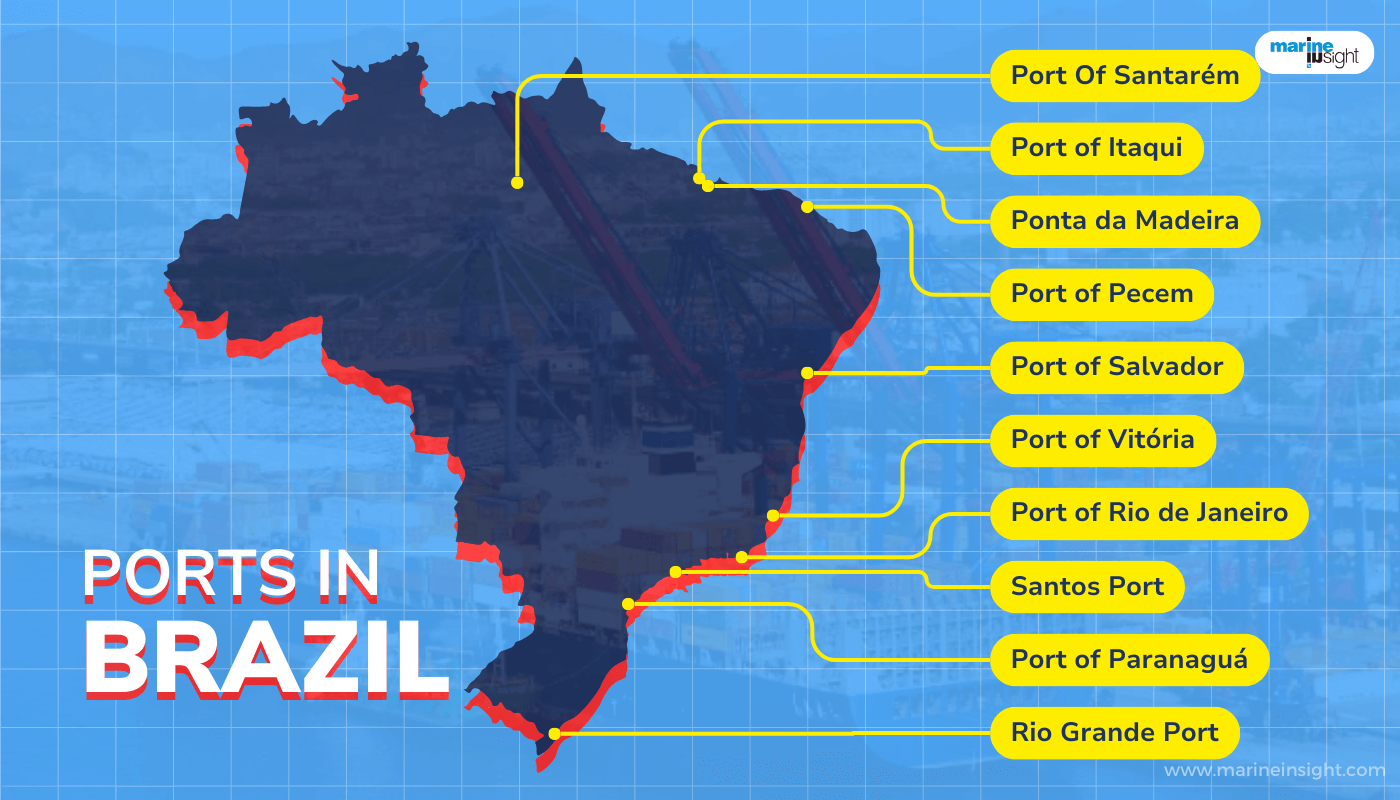
Brazil, the world’s fifth-largest country by area, has a coastline of nearly 7,500 kilometres. Officially known as the Federative Republic of Brazil, the largest country in South America and Latin America, it has a vast population of over 211 million.
Brazil borders all countries in South America and covers almost half of the continent, except Ecuador and Chile.
While it covers a large area along South America’s eastern coast, most of Brazil’s borders fall in the continent’s interior. The country’s port sector has an average annual turnover of 700 million tons of various goods. Hence, the ports in Brazil contribute more than 90% of the country’s trade volume.
Brazil has 175 port installations, including around 32 public ports and the rest private ports. The largest and key public port in the country is Porto de Santos or Santos Port, situated in São Paulo state.
All ports in the country are under the regulatory bodies ANTAQ (National Agency For Waterway Transportation) and MTPAC (the Ministry of Transportation, Ports, and Civil Aviation). A port authority oversees each port, whereas the Brazilian Maritime Authority controls activities undertaken in Brazil’s jurisdiction waters.
The MTPAC’s SEP-PR (Secretariat of Ports of Presidency) administers the country’s port system. Its responsibilities include formulating policies, licensing programs, and projects supporting the development of seaports.
Brazil has 50,000 kilometres of waterways and around 36 deep-water ports. In this article, we will discuss the 10 major ports in Brazil and their importance.
Santos Port – SP (Porto de Santos)
Santos, São Paulo
UN/LOCODE: BR-SSZ
Gross Cargo Tonnage (2017): 129.8 million tonnes
TEU Traffic (2017): 2.697 million units
Located in the city of Santos in the São Paulo state of Brazil, Port Of Santos is the busiest container port in Latin America and the 39th busiest container port in the world. As of today, it has the most modern structure in the country and remains the largest port in Latin America.
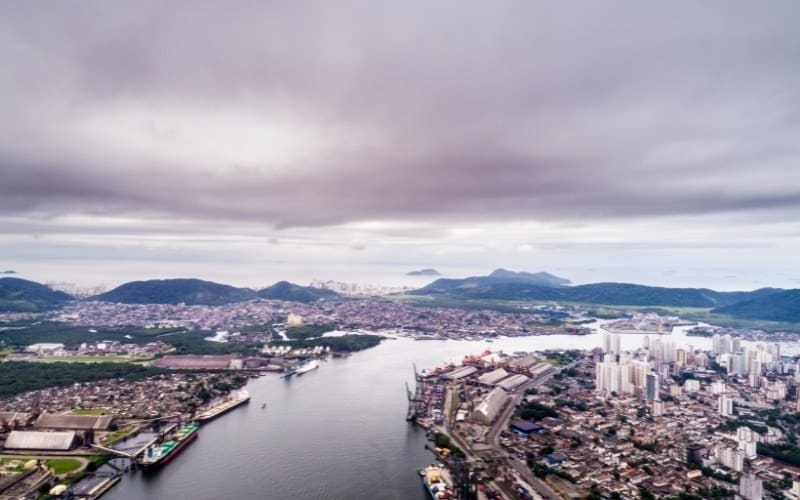
Also known as Porto de Santos, it plays a vital role in São Paulo’s economy and is responsible for Brazil’s 28% of foreign trade. Spread over 770 hectares, Santos Port is the gateway to most of the goods that circulate around the country.
Sugar, soy, and coffee are its main exports. It is the largest port in Brazil, providing imports and exports to and from all over the world. As of 2010, the port recorded nearly 97.2 million tons of cargo.
Porto de Santos has a wide range of cargo-handling terminals, including those for solid and liquid bulk, containers, and general loads.
Anchieta and Imigrantes highways make up the terrestrial access system to the port, while Ferroban and MRS operate the railroads.
The principal source of income for the people of Santos City comes from the port, which is highly dependent on the workforce. Hence, a worker strike in the port affected the entire city and caused plenty of issues in the past.
Since the 1980s, the Companhia Docas do Estado de São Paulo (CODESP) has administered one of Brazil’s most popular ports, Porte de Santos.
Port Of Santarém – PA
Santarém, Pará
UN/LOCODE: BR-STM
Gross Cargo Tonnage(2019): 12 million tonnes
Situated in the city of Santarém in the Pará star of Brazil, the Port of Santarém is a popular river port in the country. The port lies at Ponta do Salé on the southern bank of the Tapajós River.
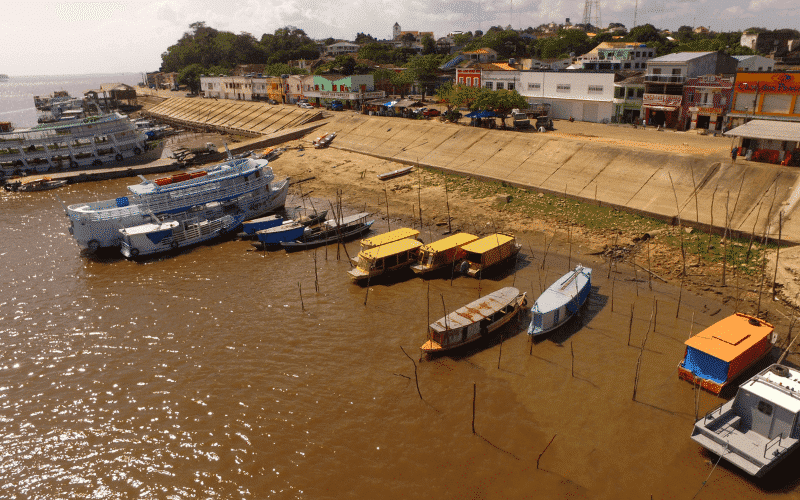
It is three kilometres away from the confluence of the Amazon River and 867 km from the city of Belém.
The military government began construction of the Santarém port proposed by the National Integration Plan (PIN) in the 1970s.
Eventually, it was inaugurated in February 1974 and received cargo and passenger ships using the precarious municipal warehouse of Santarém.
The port operates with general cargo and solid bulks of vegetable origin and fertilizers, passengers of the river, and cruise ships alongside fuels, LPG, and other liquid bulk coming from petroleum. Inland shipping landings and the export of grain happen from two directions.
These include around 80% of Porto Velho (Rondônio) cargo and 20% of it coming from Miritituba, Pará. The two main items exported are wood and grain, including soy and corn, which are exported to different parts of the world.
Companhia Docas administer the Port of Santarém do Pará (CDP).
Port of Salvador – BA
Salvador, Bahai
UN/LOCODE: BR-SSA
Gross Cargo Tonnage: Approx. 5 million tonnes
The Port of Salvador is a seaport in Brazil, situated on All Saints Bay in Salvador city of Bahia state. It lies at the eastern part of the entrance of Todos os Santos Bay from the Atlantic Ocean. The port was constructed to manage and distribute cargo around the state.
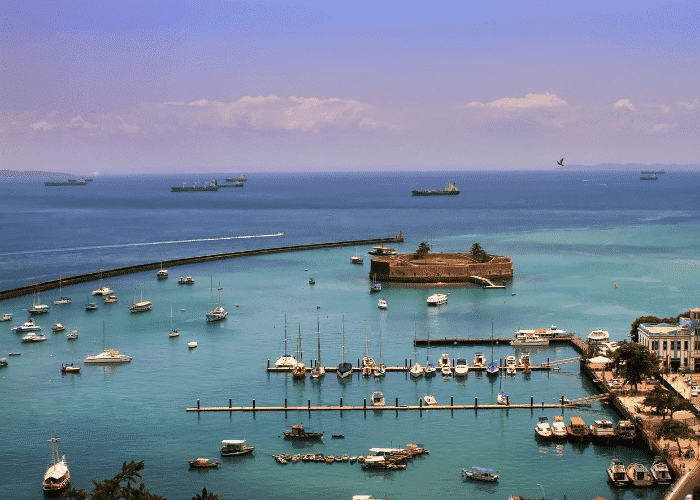
Porto de Salvador’s 2007 cargo tonnage consisted of around 2.6 million tons of ocean-going cargo alongside 0.53 tons of internal cargo. It has 12 berths intended for general cargo, one of which specializes in containers and one for Ro-Ro.
The Port of Salvador is set to be established in the 16th century and took years to become as developed as it is today. Its economic and population growth became significant around the 1940s.
However, the importance of the modern port was highlighted when an industrial centre and petrochemical complex were built close to the city.
The port now provides clearance and pilotage services to the port of Aratu, Madre de Dues’s Petrobras oil terminal, along with the Usiba iron ore terminal.
The Salvador Port is currently administered by Companhia das Docas Estado da Bahia (CODEBA). It is amongst the most famous ports in Brazil.
Port of Vitória – ES (Porto de Vitória)
Vitória, Espirito Santo Bay
UN/LOCODE: BR-VIT
Porto de Vitória is located in the city of Vitória in the Espirito Santo Bay of Brazil. It lies on the shores of the Santa Marta River on either side of Vitoria Bay.
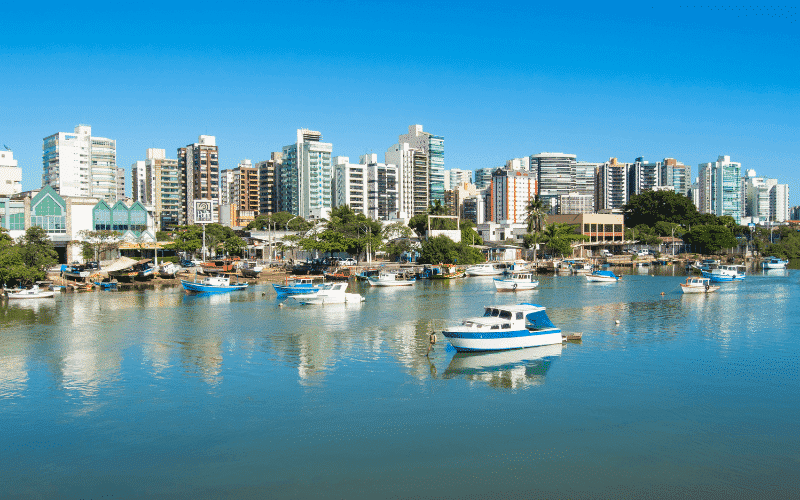
The Vitória port is amongst the most challenging ports for ships to access in the country. It lacks investment in infrastructure to enhance access to large vessels. Hence, the port is exceptionally narrow and has stones and mountains, complicating their access. It has traffic restrictions that limit the port’s use.
As a result, Porto de Vitória is used mainly by cruise ships alongside ships and oil platform repairing. When it showed signs of saturation, the Companhia Vale do Rio Doce established another port in Vitória.
Several projects for the improvement of the Port of Vitória have been outlined. However, their construction is still being processed. It is desired to support Brazil’s oil and gas industry. The port circulates a variety of products, including steel products, cocoa, cereal, and soluble coffee beans. Other main products are marble, granite, iron, pig iron, and bulk.
The Companhia Docas do Espirito Santo, or CODESA, administers the Port of Vitória.
Port of Paranaguá – PR (Porto de Paranaguá)
Paranaguá, Paraná
UN/LOCODE: BR-PNG
Gross Cargo Tonnage(2020): 57 million tonnes
Situated in the Paranaguá city of the Paraná state of Brazil, the Port of Paranaguá is the largest bulk port in Latin America.
Amongst all ports in Brazil, Porto de Paranaguá is the largest for grain export, second largest in tonnage and third largest in container shipping.
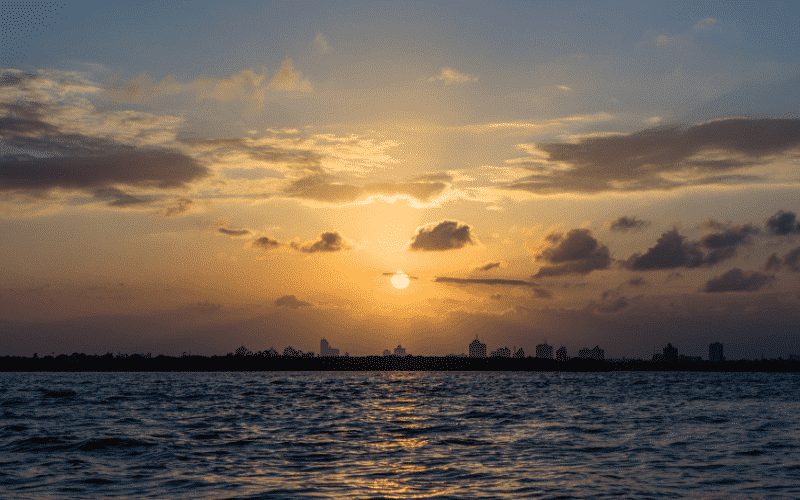
Porto de Paranaguá is known for exporting agricultural products, mainly soybeans and soybean meal. Other export products include soy flour, vegetable oil, sugar, paper (coil), frozen products, and others.
The famous port was established as a privately owned pier towards the end of the 19th century. As of today, the Paranaguá port does not have the proper structure to manage the current volume of exports.
The second among the largest ports in Brazil has been administered by Administração dos Portos de Paranaguá (APP) since the late 1940s.
Port of Rio de Janeiro – RJ (Porto de Rio de Janeiro)
Rio de Janeiro city, Rio de Janeiro state
UN/LOCODE: BR-RIO
Gross Cargo Tonnage (2016): 6.1 million tonnes
TEU Traffic (2016): 0.29 million units
The Port of Rio de Janeiro is a seaport in Brazil’s second-most populous city, Rio de Janeiro, in the homonym state. It lies on the western coast of the famous Guanabara Bay.
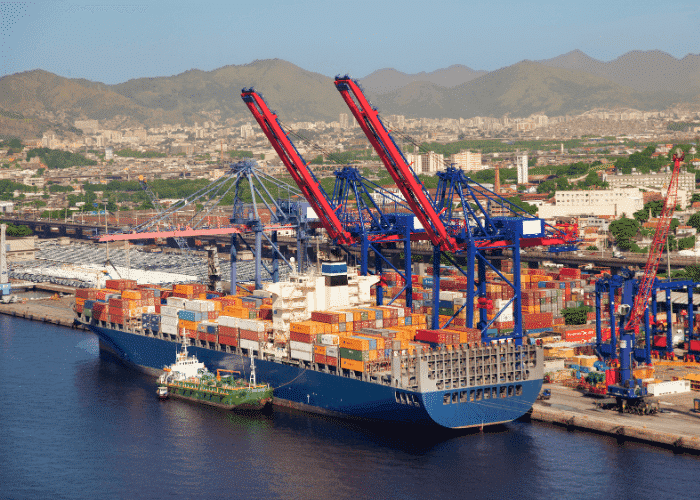
The third-busiest Port in Brazil, Rio de Janeiro Port operates with loads including general container cargo, electronic equipment, rubber, petrochemicals, steel products, and pig iron. The list of Rio de Janerio Port’s main products includes vehicle parts, press paper rolls, and coffee, alongside solid bulk.
While the port’s construction proposal came in the 1870s, Porto de Rio de Janeiro only opened in 1910. It has a 6.7-kilometre-long pier with 31 berths, 18 warehouses, and 15 open patios.
The Companhia Docas do Rio de Janeiro is responsible for managing and administrating the Port of Rio de Janeiro.
Rio Grande Port – RS
Rio Grande, Rio Grande do Sul
UN/LOCODE: BR-RIG
Gross Cargo Tonnage(2015-2016): 37.6 million tonnes
Located in the state of Rio Grande do Sul, Porto de Rio Grande is one of the main ports in Brazil and Latin America. It ranks in the third position amongst the largest ports in the country. The seaport sits along the right bank of the North Channel.
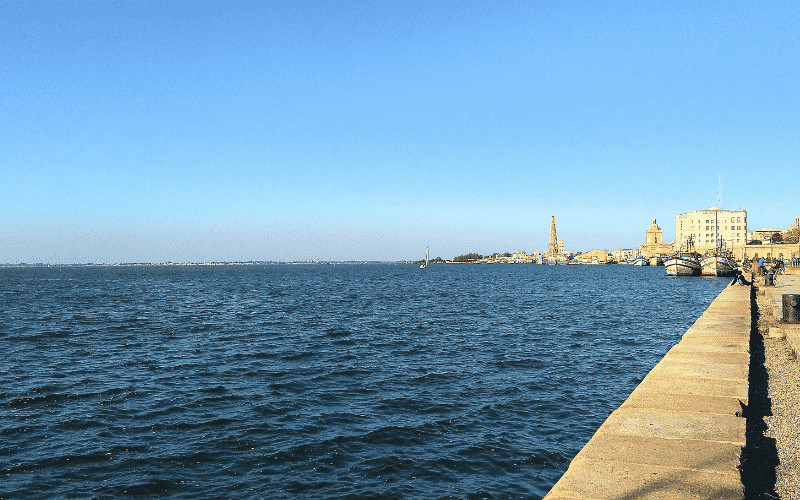
Even though the port was proposed when the Rio Grande city was founded (1737), its construction did not start until 1869. Hence, Porto de Rio Grande was inaugurated later in 1972. As of today, the seaport is one of the most developed ports in the country. It has a long harbour and isn’t saturated or congested like many other ports in Brazil.
The main export products through the Rio Grande Port include soybeans, soybean meal, wheat, rice, benzene, and cellulose. On the other hand, the main import products are mostly chemicals and minerals, along with crude oil, barley, and wheat.
As of today, the state government of Rio Grande do Sul handles the management and administration of the famous seaport through the Superintendency of Ports of Rio Grande do Sul (SUPRG).
Ponta da Madeira – MA
Sao Luis, Maranhão
UN/LOCODE: BR-PMA
Gross Cargo Tonnage(2020): 190.1 million tonnes
Situated in the Sao Luis city of Brazil’s Maranhão state, Ponta da Madeira is one of the country’s largest iron ore loading ports. The private port is one of the few Brazilian terminals suited for ultra-large Valemax ships.
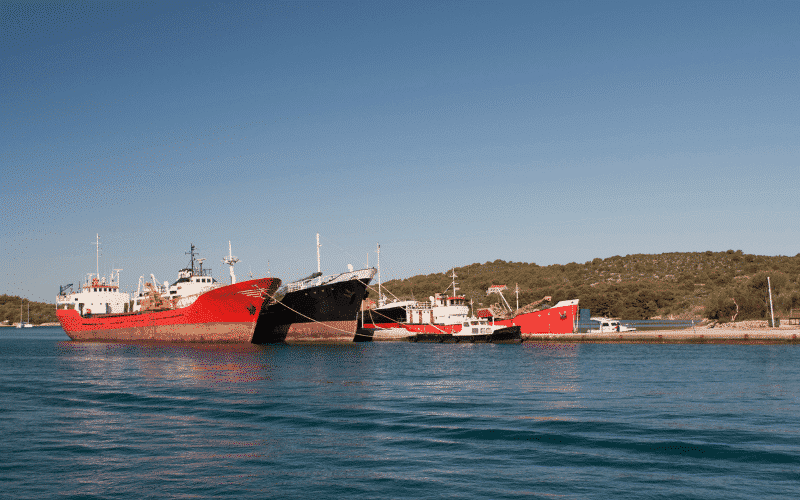
It is right next to the Port of Itaqui, a public port in the same state. Moreover, the private port was elected as the terminus of the Estrada de Ferro Carajas. The Brazilian mining company Vale owns Ponta da Madeira and intends to build giant steelworks alongside the terminal. The private maritime port is considered the national champion in cargo handling.
Port of Itaqui – MA (Porte de Itaqui)
Sao Luis, Maranhão
UN/LOCODE: BR-IQI
The Port of Itaqui is often confused with the city of Itaqui in the Rio Grande do Sul state. However, the seaport is situated in Sao Luis city in the Brazilian state of Maranhão. It sits next to Ponta da Madeira’s private port.
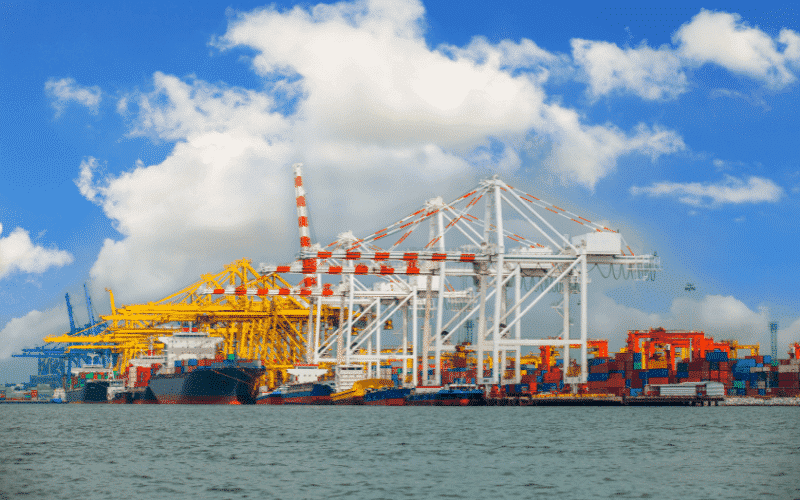
The port’s construction began in 1966 and was inaugurated around 1974. Initially, a Maranhão dock company, Codomar, Companhia Docas do Maranhão, managed the Port of Itaqui. However, its administration was later passed on to the state government of Maranhão.
Porte de Itaqui’s main cargoes include aluminium ingots and bars and general solid and liquid bulk. The port also exports soybeans, copper, and pig iron.
Port of Pecem – CE
Sao Goncalo do Amarante, Ceará
UN/LOCODE: BR-PEC
Gross Cargo Tonnage (2013): 6.3 million tonnes
Located in the municipality of Sao Goncalo do Amarante, in the state of Amarante, it is one of the two large ports in the Brazilian state. Under the government of Brazil’s Growth Acceleration Program (PAC2), the seaport started its phased expansion in the past.
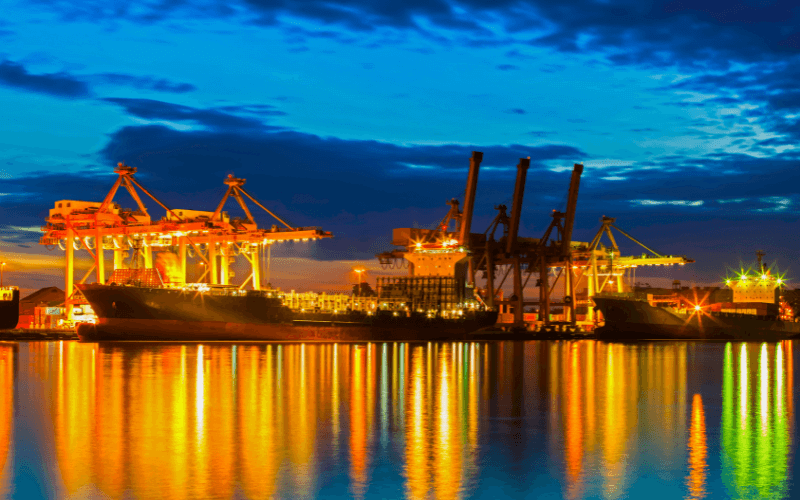
For the last few years, the northeastern port in Brazil has been rapidly and strategically growing. It lies nearly fifty kilometres away from the capital city of Ceará, Fortaleza.
The Port of Pecem is a deep-water port with two piers. It handles general cargo and containers. The main products exported and imported through the small port include shrimp, fruits, and cashew nuts.
Even though it is relatively smaller, the Port of Pecem is among Brazil’s major ports.
You might also like to read:
- 10 Major Ports In India
- 10 Major Ports In China
- Top 14 Major Ports in Italy
- 10 Major Ports in Dubai and the United Arab Emirates
- 15 Major Ports in Spain
Disclaimer :
The information contained in this website is for general information purposes only. While we endeavour to keep the information up to date and correct, we make no representations or warranties of any kind, express or implied, about the completeness, accuracy, reliability, suitability or availability with respect to the website or the information, products, services, or related graphics contained on the website for any purpose. Any reliance you place on such information is therefore strictly at your own risk.
In no event will we be liable for any loss or damage including without limitation, indirect or consequential loss or damage, or any loss or damage whatsoever arising from loss of data or profits arising out of, or in connection with, the use of this website.
Do you have info to share with us ? Suggest a correction
Disclaimer :
The information contained in this website is for general information purposes only. While we endeavour to keep the information up to date and correct, we make no representations or warranties of any kind, express or implied, about the completeness, accuracy, reliability, suitability or availability with respect to the website or the information, products, services, or related graphics contained on the website for any purpose. Any reliance you place on such information is therefore strictly at your own risk.
In no event will we be liable for any loss or damage including without limitation, indirect or consequential loss or damage, or any loss or damage whatsoever arising from loss of data or profits arising out of, or in connection with, the use of this website.

About Author
Zahra is an alumna of Miranda House, University of Delhi. She is an avid writer, possessing immaculate research and editing skills. Author of several academic papers, she has also worked as a freelance writer, producing many technical, creative and marketing pieces. A true aesthete at heart, she loves books a little more than anything else.
Latest Maritime Knowledge Articles You Would Like:
Daily Maritime News, Straight To Your Inbox
Sign Up To Get Daily Newsletters
Join over 60k+ people who read our daily newsletters
By subscribing, you agree to our Privacy Policy and may receive occasional deal communications; you can unsubscribe anytime.



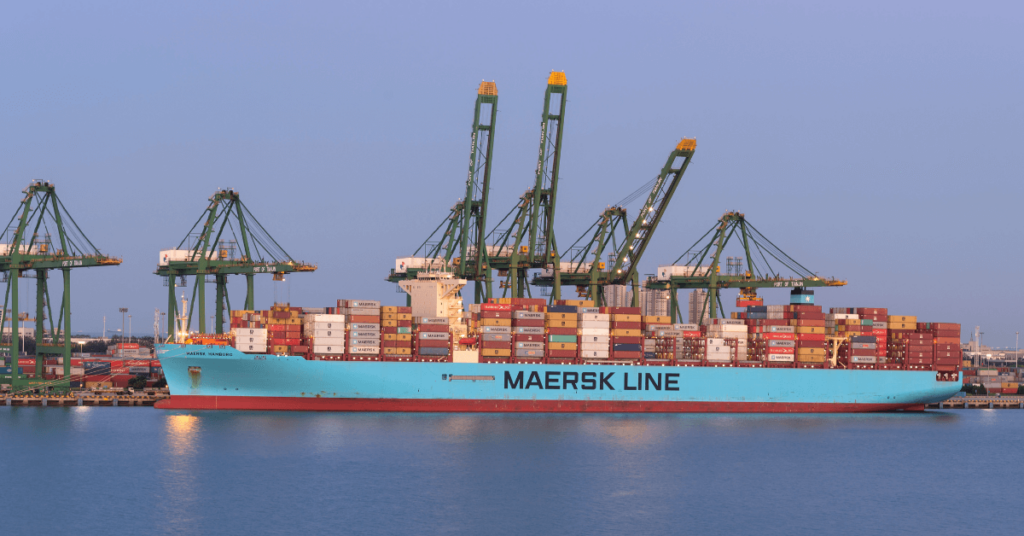
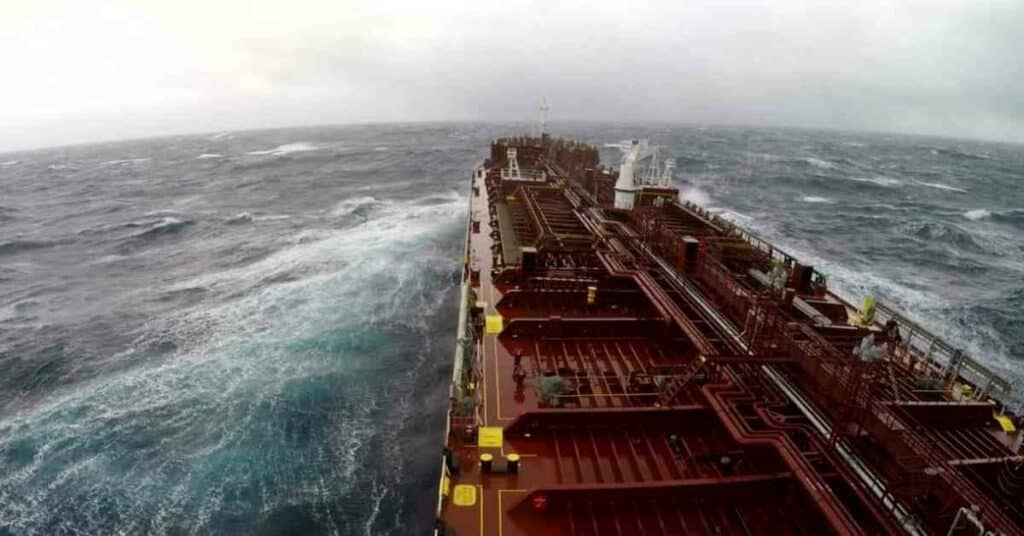
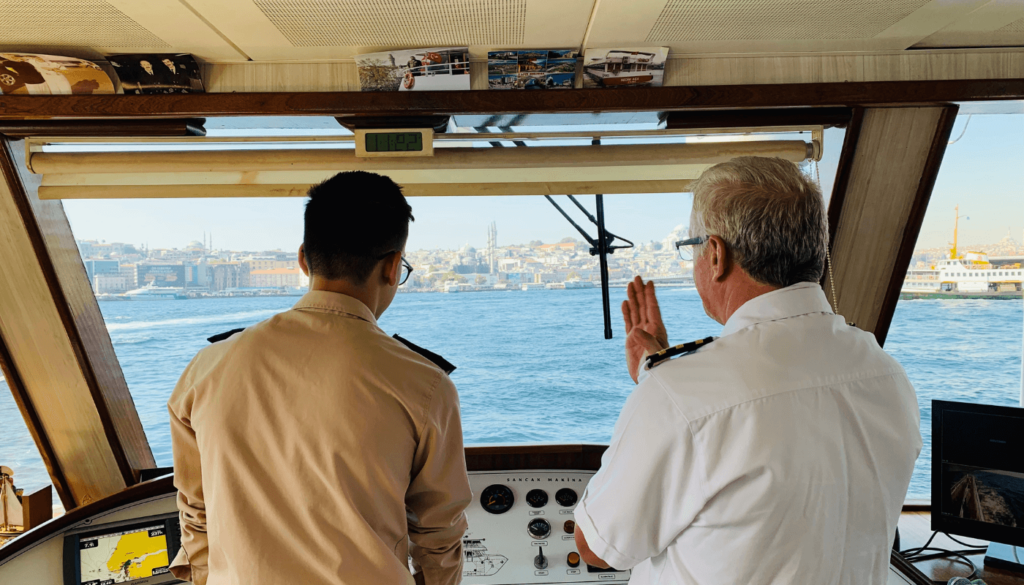

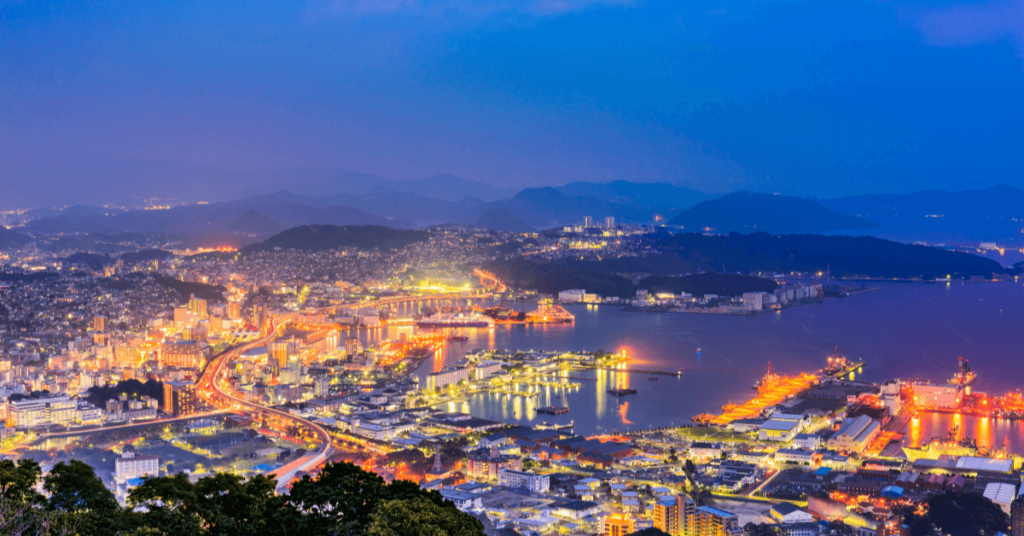


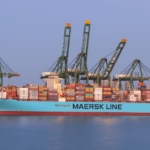
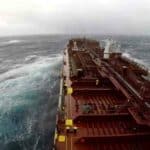
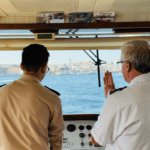

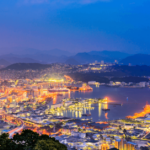

Anish …
Back in 1980 my container ship visited many ports in Brasil ; Santos, Rio, Porto Alegre
There was one port in the very north of Brasil we went to but I don’t remember the name of it
We were a lash ship and I don’t remember a huge container port with all those container cranes but it was a smaller place
I do remember the nearby town was up on a hill and had many German clock and jewelry stores
Maybe Sao Luis ? Santarem does sound familiar ??
????
GUY
vvv